Report
Reports allow users to gather and analyze key data, such as capacity, scheduled hours, logged hours, etc., from various plans, including team, project, and program levels. These insights help track performance, monitor workloads, and support better decision-making.
Reports can be customized with filters to focus on the most relevant information, and the data can be managed or exported to Excel for further analysis and sharing.
The Report Board offers three distinct sections for data reports: Summary, Chart, and Table.
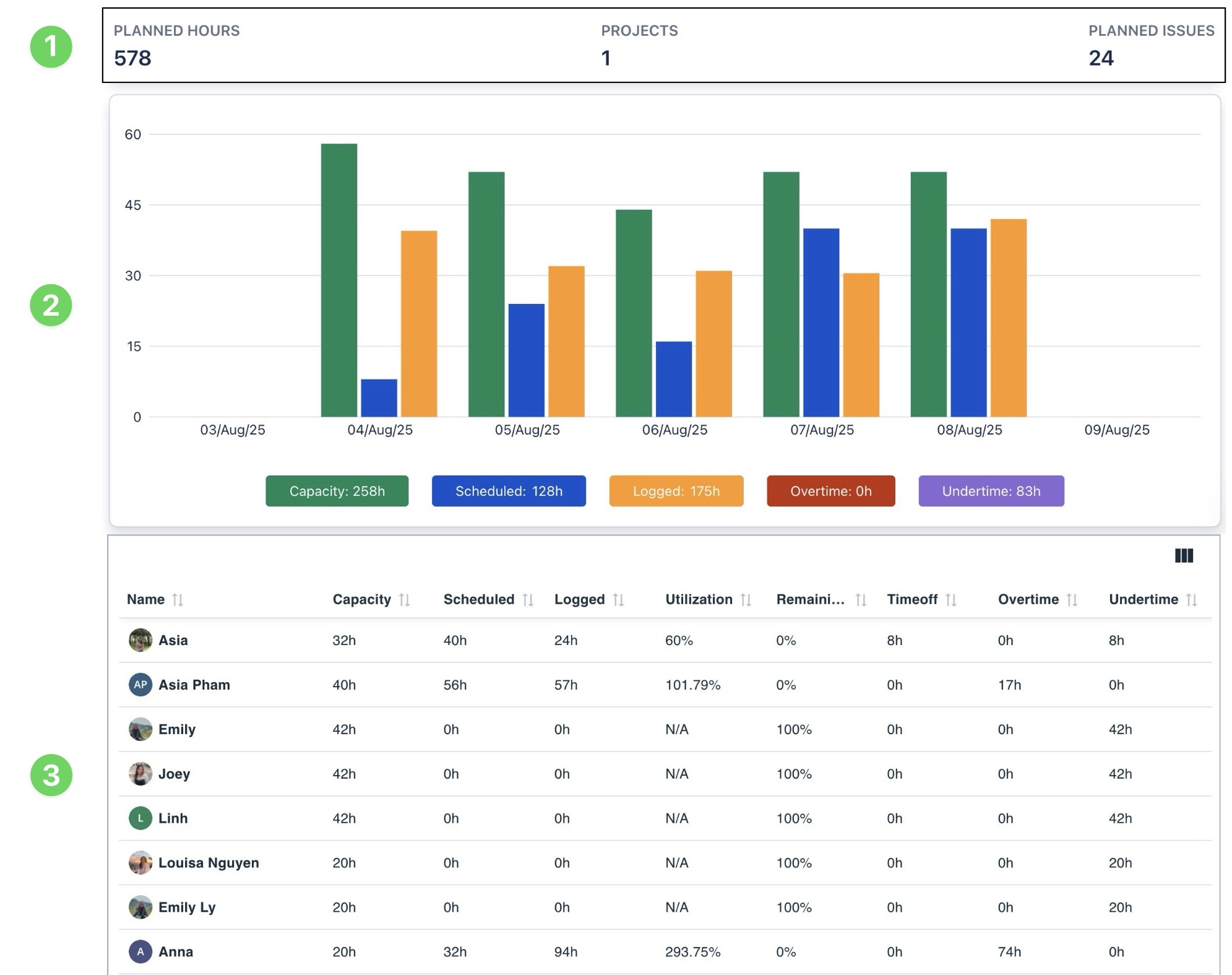
Summary Reports: Provide a high-level overview, focusing on key insights and essential data.
Chart Reports: Use column charts to visually present key metrics like capacity, scheduled, and logged hours, enabling quick comparisons across categories or time periods.
Table Reports: Display detailed data in a structured, row-and-column format, offering an in-depth view.
Filter options
The following filters allow you to customize the data displayed in the Report:
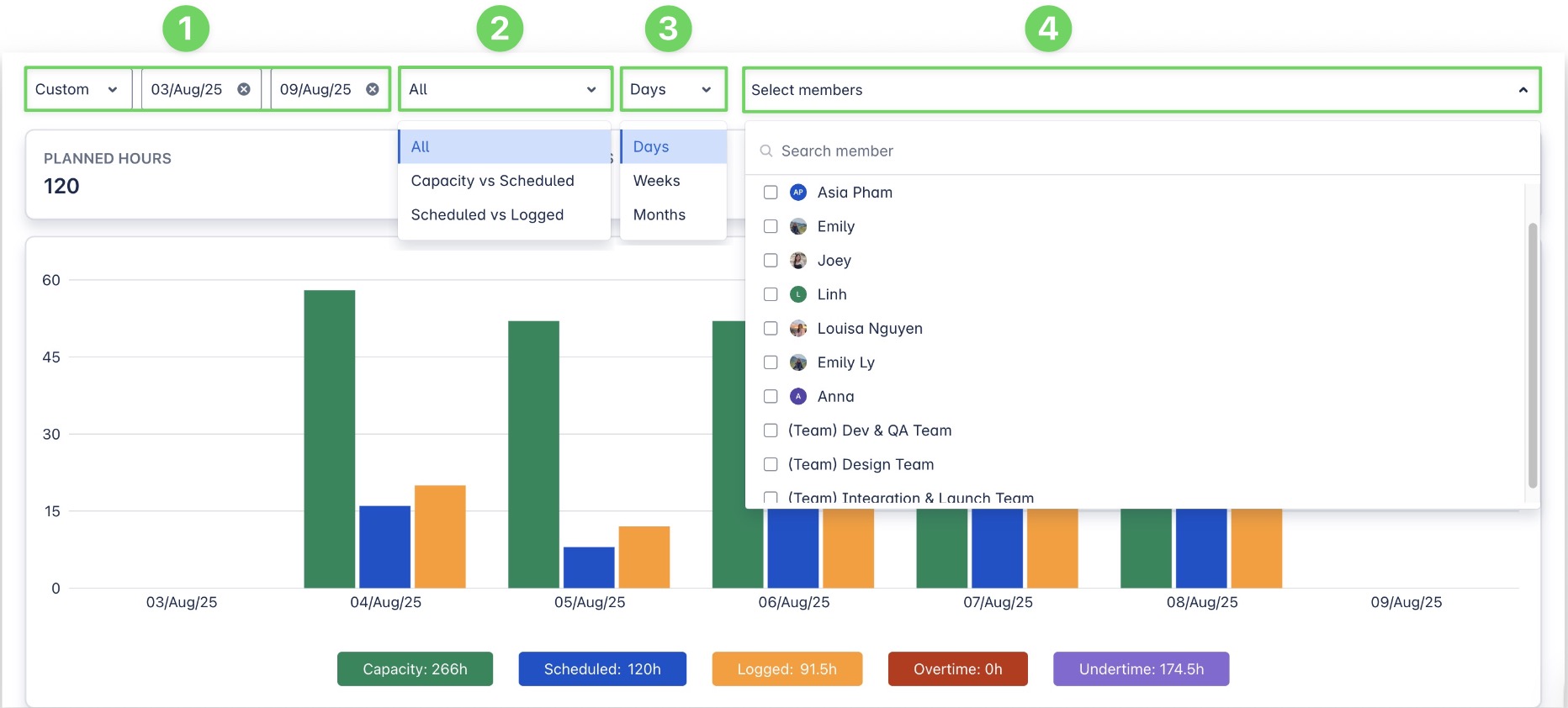
Options | Description |
|---|---|
| Dynamic range: Select a relative time frame (e.g., This week, Last 30 days). The range updates automatically over time. Fixed range: Set a custom date range by selecting a specific start and end date. |
| 🟩 🟦 🟧 All: Shows capacity, scheduled, and logged hours together for full visibility. 🟩 🟦 Capacity vs Scheduled: Compares how much time was available (capacity) vs. how much was planned (scheduled). 🟦 🟧 Scheduled vs Logged: Compares planned hours against actual time spent. |
| 📅 Days: View data broken down by each day. 📆 Weeks: View weekly summaries. 🗓️ Months: View monthly totals. |
| 🔍 Search by name 👤 Select individual members 👥 Select entire teams |
Summary Report
The Summary Report offers a concise yet comprehensive overview of key project metrics. It serves as a snapshot of critical data, helping project managers and stakeholders quickly assess the status and scope of ongoing efforts.

This report includes important metrics such as:
Planned hours: Refers to the total estimated time allocated for completing all scheduled tasks across the entire project.
Projects: In the context of the program or team, this metric indicates the total number of projects included in the report.
Planned issues: Refers to the number of tasks that have been planned for completion within the project.
Chart Report
The Chart Report provides a visual overview of key metrics such as capacity, scheduled hours, and logged hours, using column charts for easy comparison across categories or time periods. It also highlights overtime and undertime to help identify resource utilization imbalances and optimize workload management.
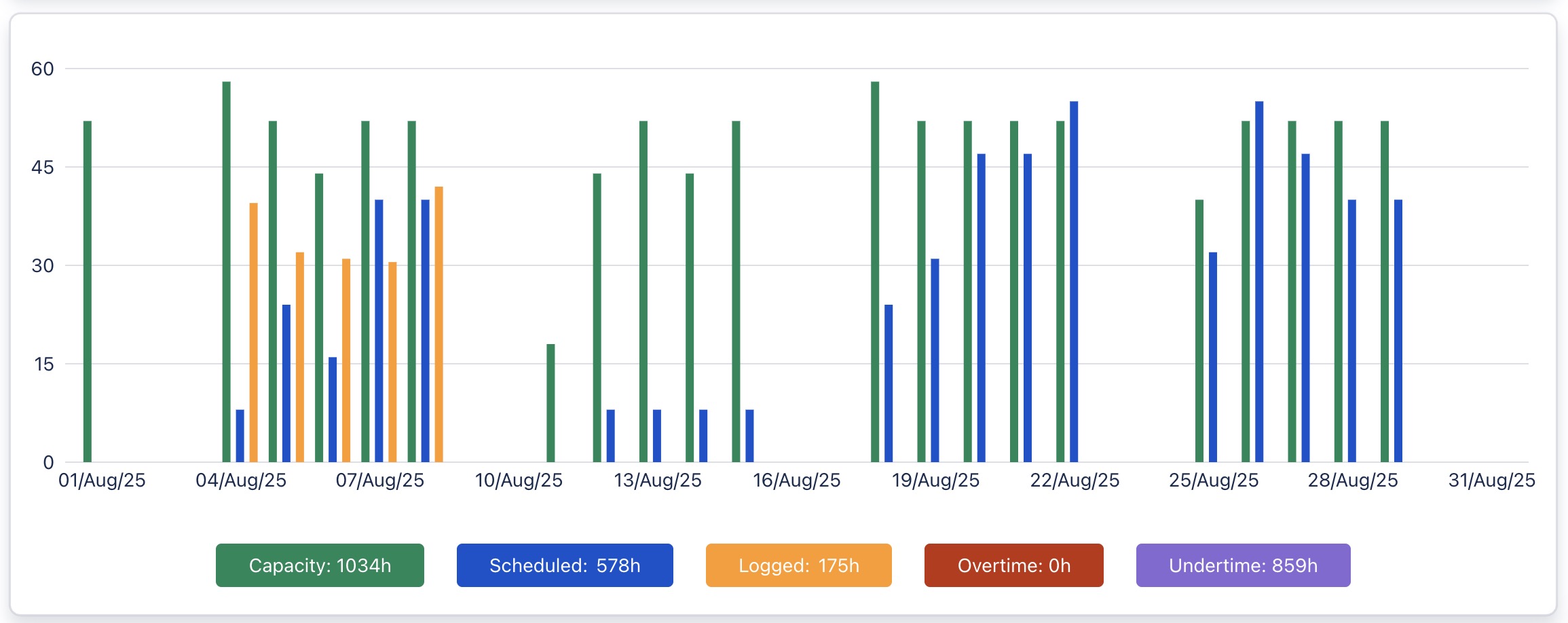
This report includes important metrics such as:
Capacity: This represents the total available time of resources that can be allocated across all tasks in a given period.
Scheduled: Refers to the total estimated time allocated for completing all scheduled tasks across the entire project.
Logged: This shows the actual hours worked or logged by the team members.
Overtime: This represents the logged hours are more than the capacity.
Undertime: This represents the logged hours are less than the capacity.
Overtime | Undertime (h) = Capacity - Logged time
Viewing detailed charts
Hold the pointer over the chart to show the detailed information for each metric.
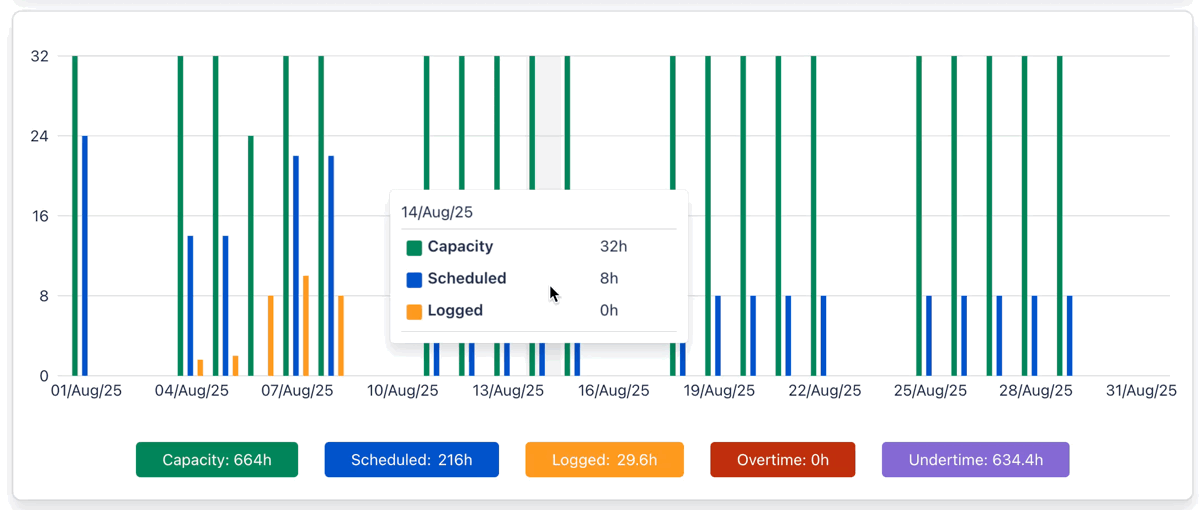
Table Report
The Table Report provides detailed, tabular views of data, with options for tracking specific aspects like tasks, projects, or assignees.
Display Fields
The Table Report allows you to customize which data fields to display, providing flexibility based on your reporting needs. These fields include:
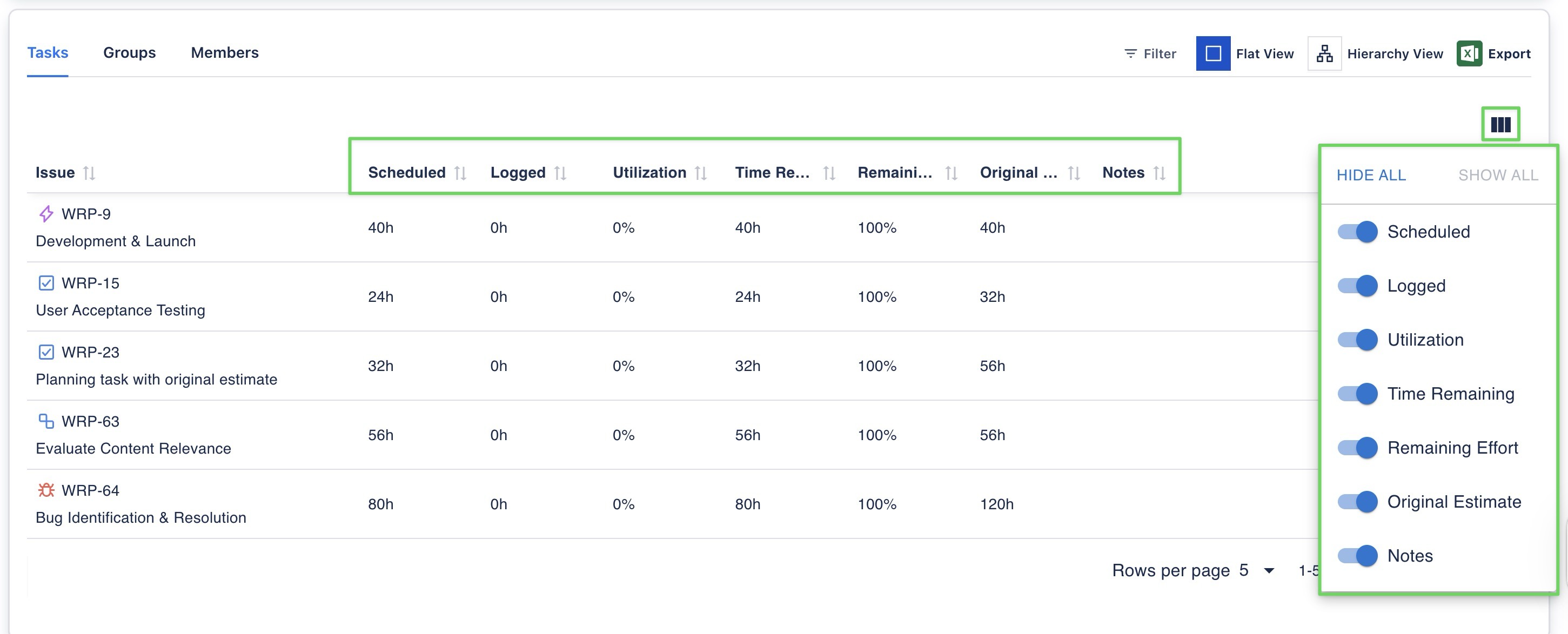
Scheduled refers to the planned time allocated for tasks or activities.
Logged refers to the actual time spent working on tasks or activities.
Utilization is a percentage that shows how efficiently time is being used. It’s calculated by dividing the logged time by the scheduled time.
Time Remaining refers to the estimated time left to complete a task or project.
Remaining Effort is a percentage that shows how much work is left to complete relative to the original estimate. It’s calculated by dividing the remaining work by the original estimate.
Original Estimate is the initial amount of time you thought it would take to complete a task or project.
Notes are used to provide additional information or comments about tasks or projects.
You can select the fields that matter most to your analysis and reporting, allowing for tailored reports that focus on specific project or stakeholder needs.
View Options
The Table Report offers two options to view the data:
Flat View
Displays data in a simple, single-level table with tasks, projects, and assignees listed without grouping.
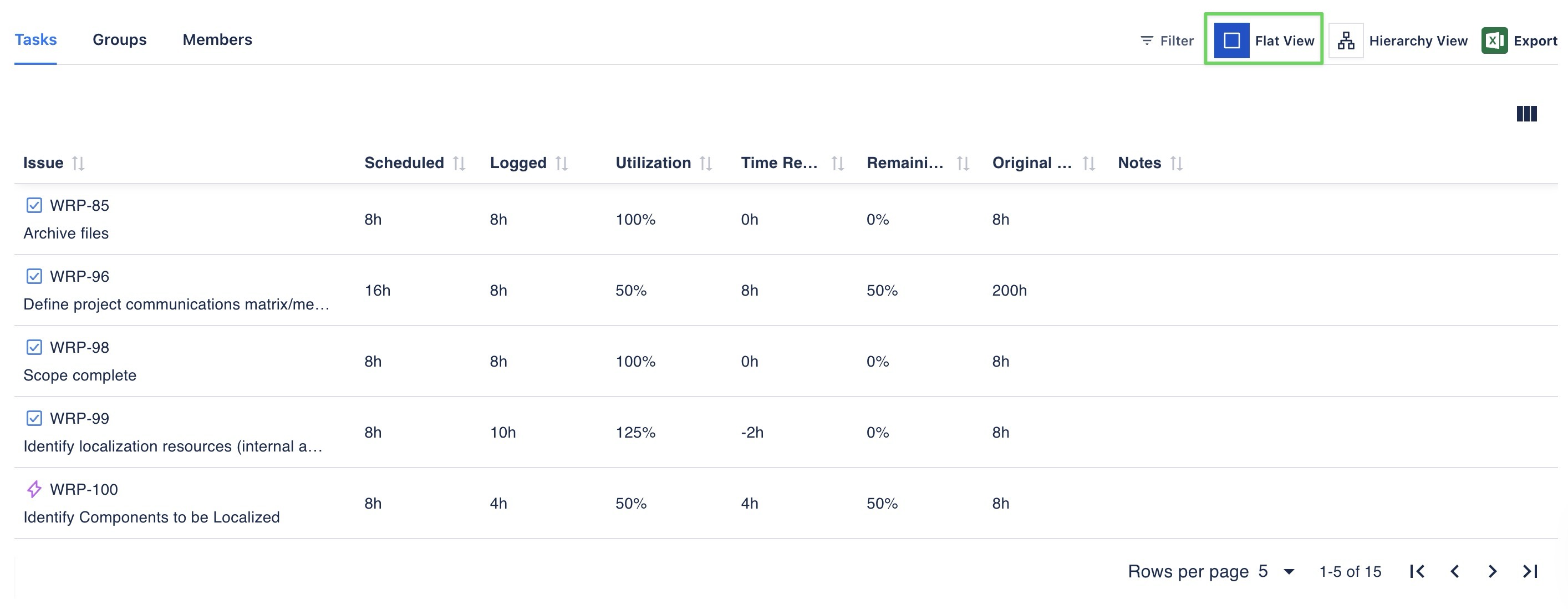
Hierarchy View
Group data in a multi-level structure (e.g., Project > Task > Assignee) to show how tasks are distributed across projects and teams.
The "Scheduled Time" toggle lets you view planned versus actual times for tasks.
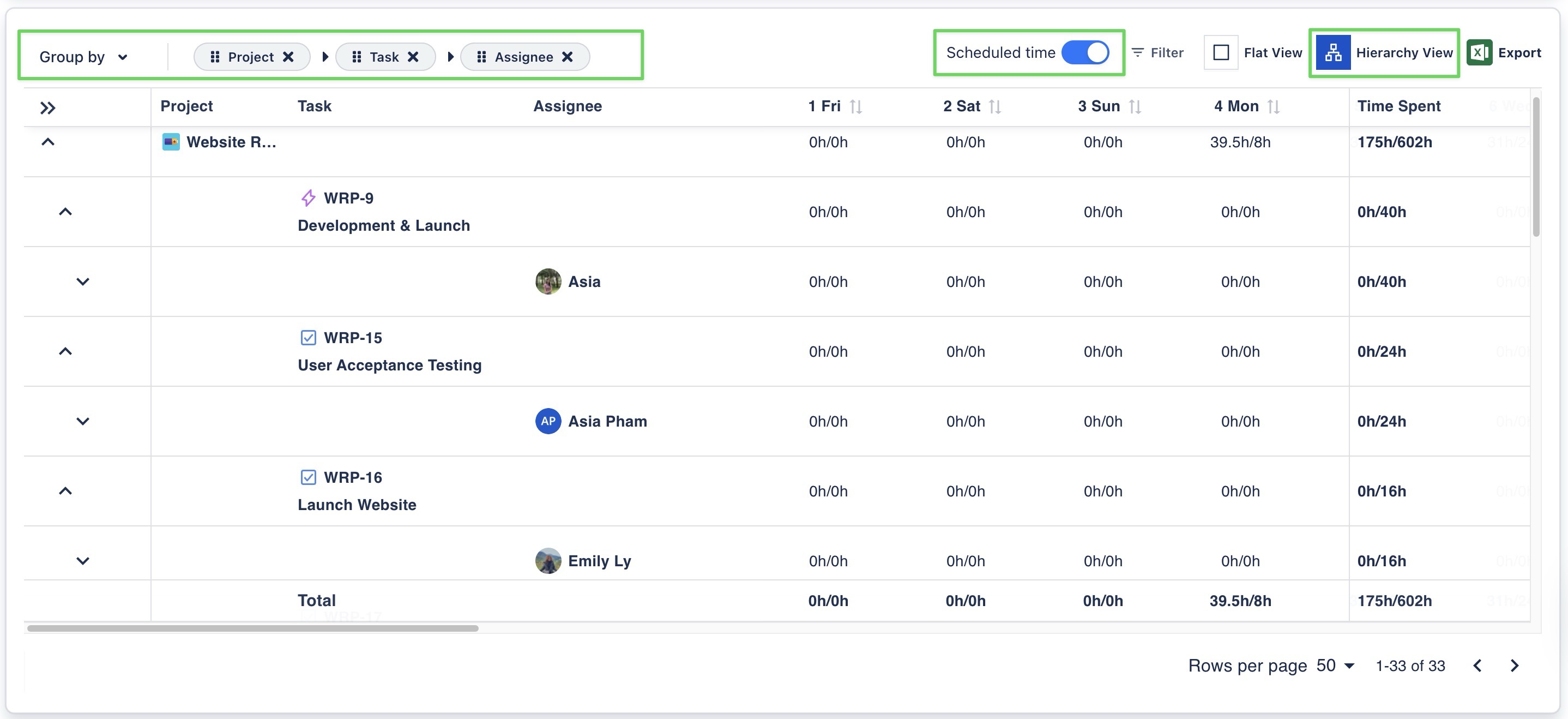
Filter reports by work items

Quick Filters: Apply predefined filters for fast access to common report views.
Basic Filters: Customize reports by selecting specific criteria, such as task status, assignee, or date range.
Task Report
The Task Report displays detailed data on specific tasks assigned to team members. It includes information on scheduled hours, logged hours, and utilization.
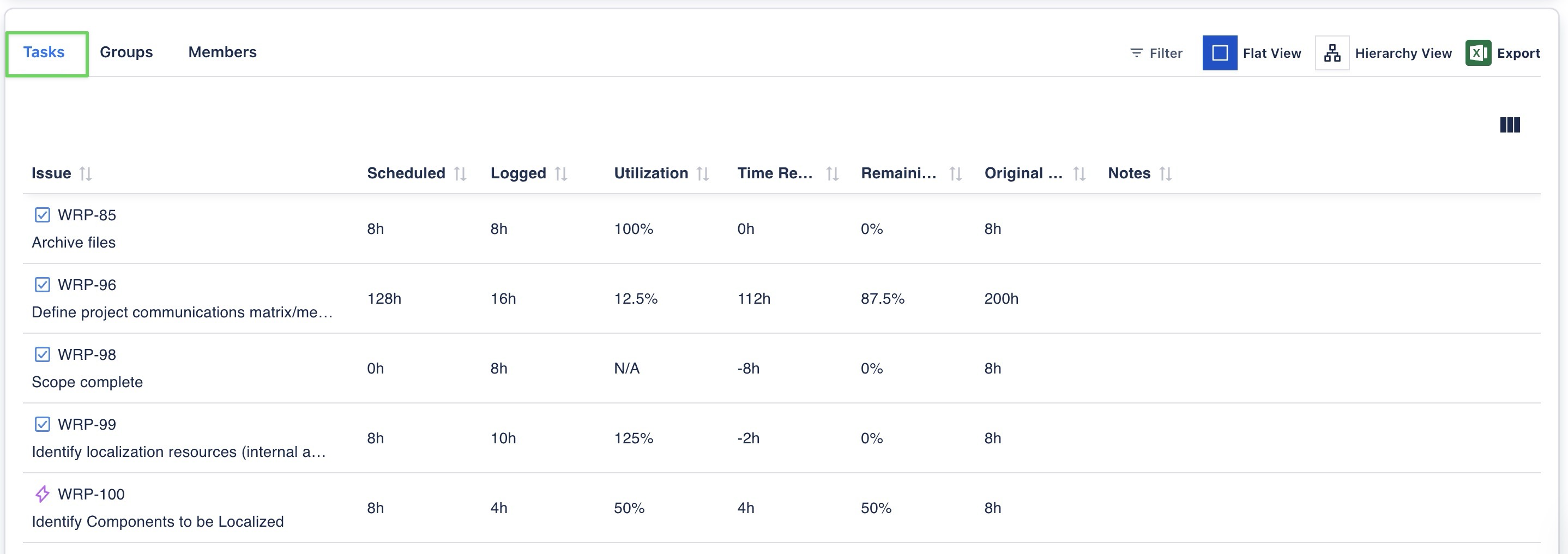
Team Report
The Team Report aggregates data for an entire team. It shows team-wide capacity, scheduled hours, and logged hours, helping you track overall team performance.

Member Report
The Member Report focuses on individual team members. It displays detailed data on each person’s capacity, scheduled hours, logged hours, time off, and overtime.

Member Time off
At the Team level, you can view and manage each member’s planned time off, including different types of leave (e.g., vacation, sick leave, personal days).
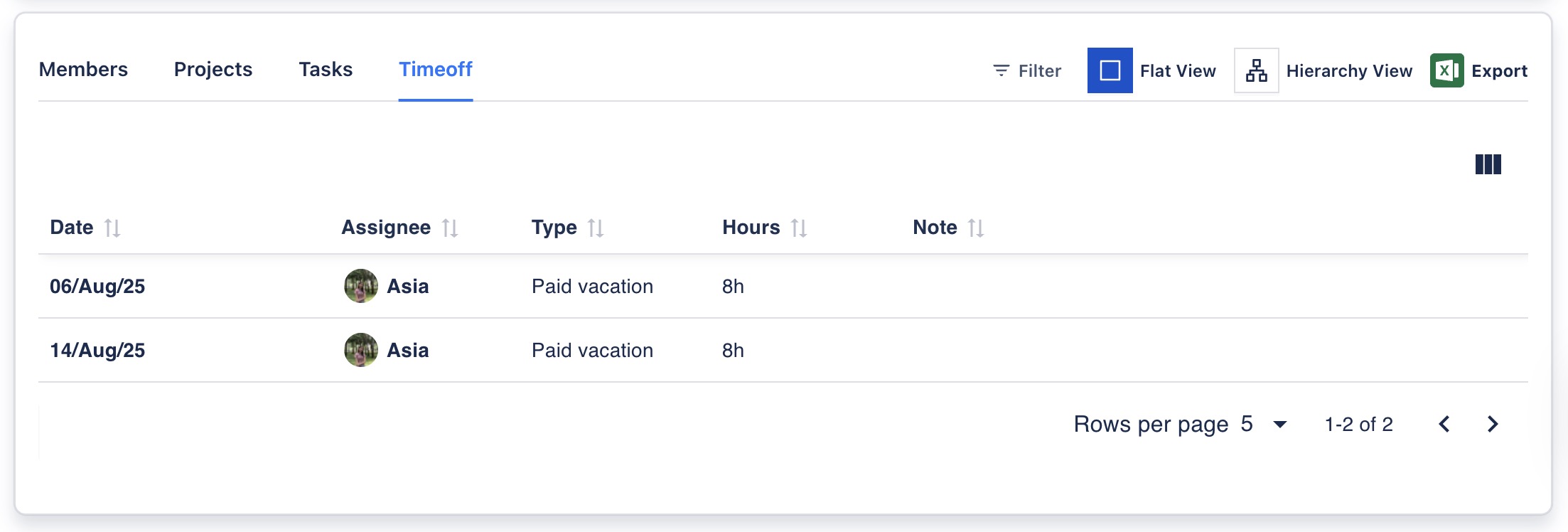
Project Report
In the context of working on a program, the Project report provides a list of projects and their associated tasks.
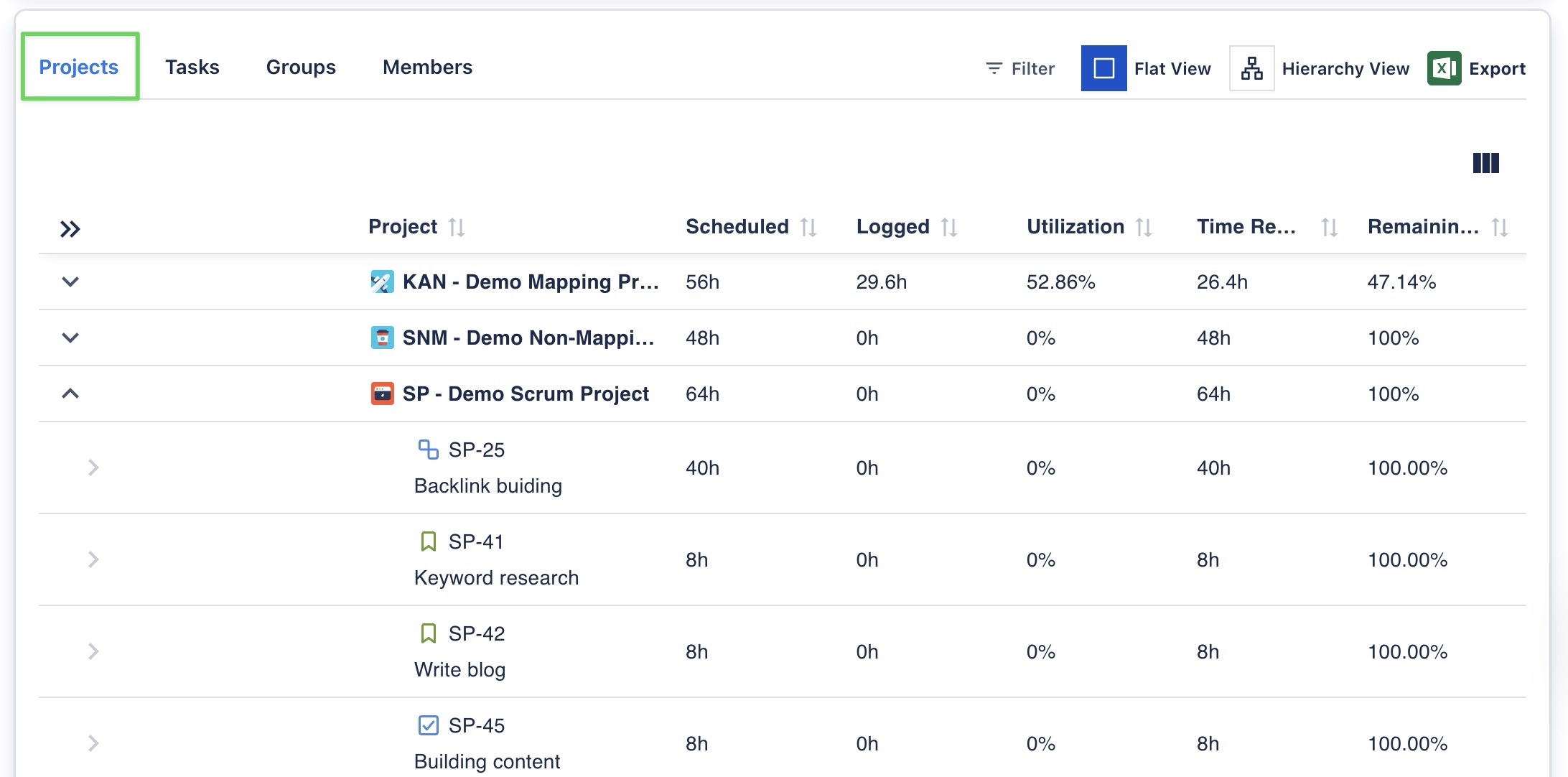
Export Data
Table Report allows you to easily export your reports for further analysis or sharing with stakeholders. Use the ![]() button to download your report in Excel format (.xlsx).
button to download your report in Excel format (.xlsx).
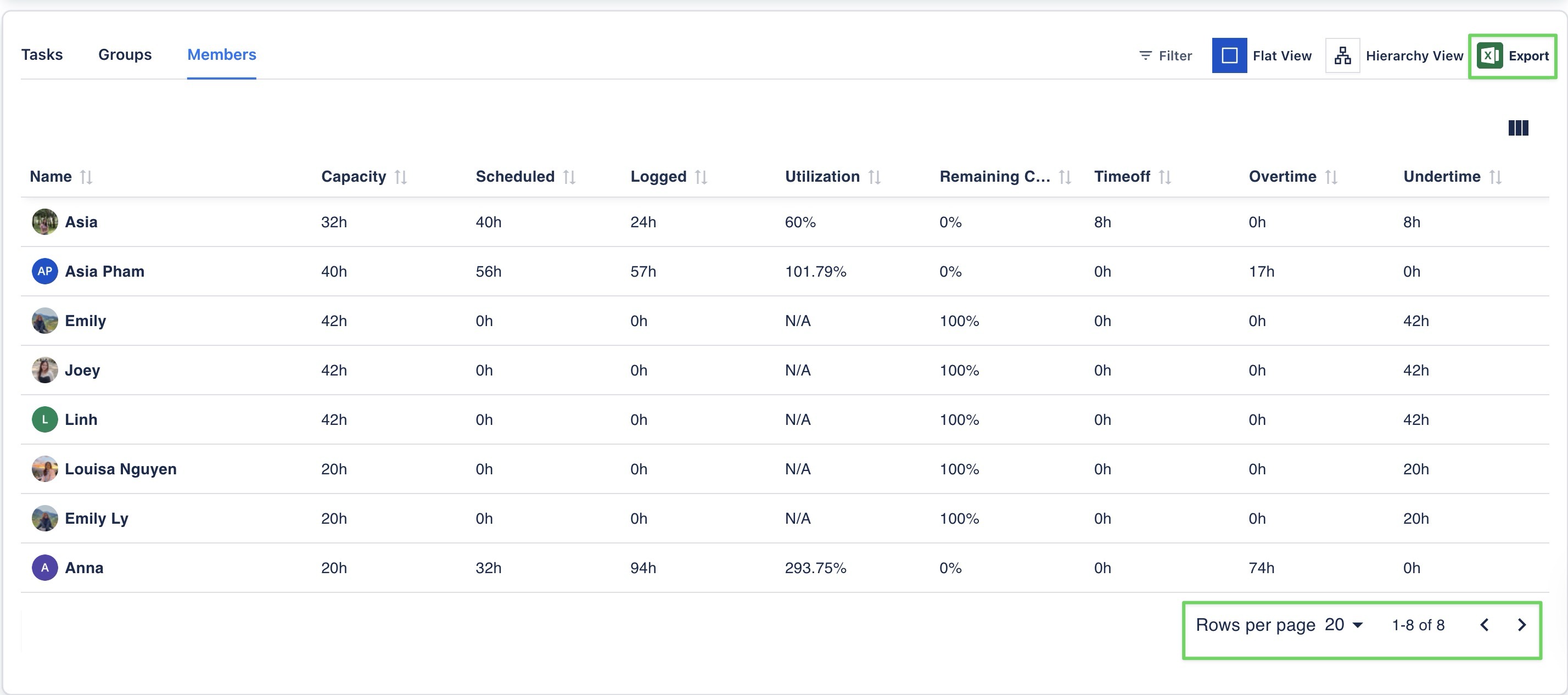
You can adjust the number of rows to export by selecting the "Rows per page" option in the bottom-right corner. This allows you to control how much data is included in your exported file.
